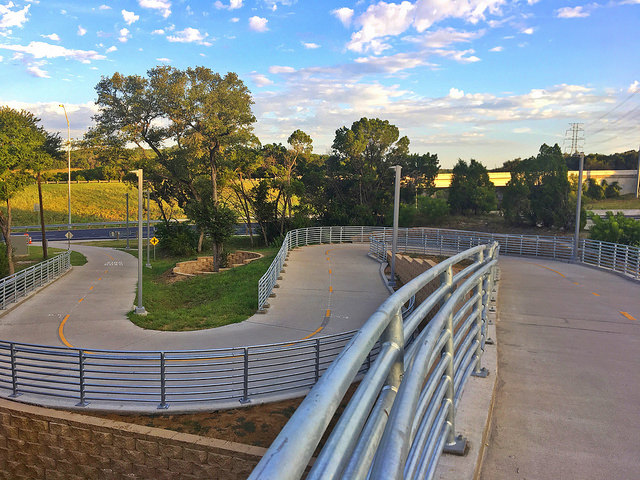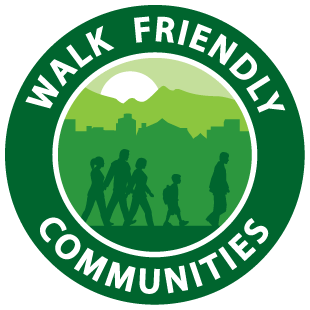
Host to a number of major events such as the high profile South by Southwest Festival, which draws vast numbers of visitors to the center of town, Walk Friendly Community Austin, TX is a city which has worked diligently to improve pedestrian infrastructure in recent years. First designated a Bronze-level Walk Friendly Community in 2011, Austin moved up to Silver in 2016. That same year, citizens approved the $270 million Mobility Bond, which provides a dedicated funding source for new transportation projects through 2024. The Local Mobility Program, a key component of the bond measure for pedestrians, contains funding streams for important infrastructure projects such as Sidewalks, Urban Trails, Safe Routes to School, and Intersection Safety.
Austin has experienced a growing level of interest and engagement from the public when it comes to supporting walking. Austin’s Pedestrian Advisory Council unanimously recommended that Austin adopt a Vision Zero Plan in 2014, and that plan was adopted by the city council in 2016. As part of its Vision Zero activities, Austin is completed its first Pedestrian Safety Action Plan, which will be incorporated into the Austin Strategic Mobility Plan due out late 2018.
The city has made great strides toward achieving its overall planning vision. Especially impressive is a Complete Streets Ordinance which was recognized by Smart Growth America as one of the top ten Complete Streets policies of 2014. This ordinance affirms the importance of context sensitive design and addresses topics like design standards, code amendments, exceptions, and staff training. In 2015, Mayor Steve Adler committed Austin to the US Department of Transportation (USDOT) Mayors’ Challenge for Safer People and Safer Streets. With tools like the Urban Trails Master Plan and the Sidewalk Master Plan, Austin is poised to reshape the pedestrian environment and continue expanding opportunities for walking.
Austin’s high level of commitment to pedestrian safety and walkability is illustrated by this 2015 report about lane conversions. The report analyzes five years of street “right-sizing” projects from 1999- 2014, assessing their impacts on safety and mobility for all road users. It evaluates both successes and areas for improvement in the street redesign process and will serve to inform the city on operational and design improvements moving forward.
Learn more about Austin’s programs in its community profile.
